Reflections from 2Q 2022
1. Condensed Market Cycles
2. Investment Grade – A Unique Opportunity
3. High Yield – Resilience of Earnings
4. The Market is Doing the Work for the Fed
5. What Happens When the Right Trade Can’t Be Put On
Dear Friends,
Welcome to the Smith Capital Investors Reflections
We’ve spent the last six months in an economic atmosphere of contradictions. The complacency around the strongly anchored view that inflation and growth would normalize as we worked through 2022 is now being challenged. This is largely due to inflation proving stickier than expected. Fears of out-of-control inflation have forced the Fed into an expeditious rate hiking path along with steps to aggressively reduce the size of the Fed’s balance sheet. We believe this argument is largely centered around changes in inflation expectations versus the actual true trajectory of inflation, but as we all know, perceptions can quickly become reality. We find ourselves migrating to the view that the fear of inflation could quickly turn to a fear of slower growth and maybe even recession.
The Fed is clearly focused on tightening financial conditions and attempting to slow the demand side of the equation. Their ultimate objective is to keep inflation expectations from moving higher. After all, the insidious nature of inflation erodes confidence in the Fed and its forecasts. We are bullish on the consumer’s ability to weather the tighter financial conditions, but higher and higher prices – via goods/services and rates – will eventually impact consumption. However, the longer inflation remains elevated, and the more aggressive the Fed’s response becomes, will only increase the chances the marketplace will turn from fears of out-of-control inflation to worries of economic growth rolling over.
Mr. Powell has successfully executed a game plan from the Greenspan playbook, using words over actions to influence markets. The Fed’s communication has been successful in sending the message that they are serious about inflation. So successful, in fact, that we have been questioning if the market is quickly doing the work for the Fed, leading to a scenario where the Fed won’t have to tighten as much as feared – something to think about as the adjustment continues. Financial conditions are significantly tighter and the repricing of the cost of capital is working its way through the system. We remind our investors that changes in the cost of capital are NOT bond market centric – they flow through other segments of the market and ultimately through the entire economic system. And while the speed of capital is the fastest I have seen in my career, the impacts of a repricing of the cost of capital take time, frequently longer than our patience. The perspective of patience is exactly what is needed in the markets these days.
These are unprecedented times in many ways, with limited historical reference. We are concerned this lack of historical reference could set the stage for more extreme outcomes. At a minimum, volatility should remain elevated. As we progress through the next six to twelve months, new information will require us to actively adjust portfolio risk positions and overall duration/yield curve positioning. The incoming information, changing consensus, and the directional shifts of the market will likely keep volatility measures elevated. Like the quick cycles we’ve experienced over the last six months, we expect there will be periods when longer duration and a reduction of risk positioning in our portfolios is warranted, followed by periods of being short duration and taking on new risks in credit and MBS (mortgage-backed securities). If volatility continues, which we believe it will, our core process and our size could allow us the flexibility to make changes with limited friction cost. With this in mind, we are very mindful of the declining liquidity position of the marketplace. Lower summer trading volumes could exacerbate this poor liquidity.
We remind investors that security selection and avoidance are always front of mind for us. As markets reprice and expectations change, one can find solace in the fundamental work behind this process. In addition, our job is to recognize changes in sentiment and/or direction in markets with a focus on the risks and decisions in the portfolios that will yield a more consistent outcome for you, our investors. We are, at our core, active managers, and acknowledge that in this environment, prudence and caution are warranted.
As always, our three pillars remain front and center – Investment Excellence, Relationships/People, and Intentional Culture.
With great appreciation and gratitude,

1. Condensed Market Cycles – The Speed of Capital & Removal of Liquidity
From the Portfolio Lens – Eric Bernum, Portfolio Manager
We have been talking about the shortening of market cycles given the tremendous increase in the speed of capital for several years now. The beginning of 2022 shows just how condensed these cycles have become and how the increased velocity of money moving through the financial system has created much more volatile outcomes for investors. The markets’ experience of these amplified moves in financial assets thus far in 2022 has been accompanied by the threat of the removal of liquidity by the Federal Reserve. Looking forward to the second half of the year, we remain concerned about the increasing frequency of large moves in valuations across asset classes as the Fed’s removal of liquidity begins in full force.
The “20% Club” – or financial indices down over 20% for the year – the cryptocurrency rout, the 2001 style revaluation of high-flying tech companies with no earnings, and the positive correlation of both negative Fixed Income and Equity returns all illustrate the widening range of possible outcomes the market faces as we embark on a much more aggressive Fed tightening cycle than most participants are used to. Exaggerating the impact on market liquidity, beyond the Fed tightening, are the aggressive plans for Fed balance sheet deleveraging which dwarfs what was accomplished during the last cycle of asset runoff. The increased velocity of change this has caused in markets is perhaps best illustrated in the amount of global negative yielding debt. Global negative yielding debt has fallen ~80% in the last year and is now back to levels last seen in 2015 with ~$12 trillion of that negative yielding debt turning positive in the last six months.
With market cycles now as short as the three-week periods between Federal Reserve meetings and subsequent Fed meeting minutes’ releases, the importance of active management and nimbleness in portfolios is even more amplified. We strongly believe this highlights the value of viewing risk in portfolios from a framework that is more holistic than strictly comparing versus an index. More importantly, the ability and willingness to react to changing market conditions and economic outlooks have had a large impact on returns experienced by managers during this violent repricing of risk (repositioning to reflect changes in expectation around the path of Fed rate hikes, global geopolitical issues, and concerns around prospects of the Fed’s removal of liquidity increase recession fears, etc.) Unfortunately, looking forward we see the market’s reaction function only increasing in both speed and magnitude as the impacts of lower liquidity exaggerate what has already been experienced thus far into the year.
2. Investment Grade Credit – A Unique Opportunity
From the Credit Lens – Jonathan Aal, Portfolio Manager, Investment Grade
A lot has happened YTD, through May 26th, the total return of Investment Grade Corporate Credit was -12%; corresponding spreads were 47bps wider. With those numbers alone one can pick up on several things very quickly. Spread widening has been fairly contained and the largest contributor to this negative 12% return has come from the move in rates, amplified by duration profiles. Duration is always an important component of total returns, but this year its impact has been pronounced.
Over the past fifteen years, the duration of the investment grade index has steadily increased. For example, the duration of AA U.S. Credit has gone from approximately 5.2yrs to 9.5yrs—a greater than 80% increase. Many investors have not been aware of this steady increase, though this year it has surely been felt by many.
Given the moves YTD, we find yields attractive having backed up to levels in the 95th+ percentile range on a 10yr basis (as of 5/26/22). This said, spread profiles have not backed up to the same historic percentiles. Corporate fundamentals remain strong, but it could be hard for companies to materially improve from current levels. This position presents a directional risk but also provides a meaningful cushion where, broadly, balance sheets and liquidity profiles are in very good condition. Through our fundamental, bottom-up research we continue to search for cracks in this foundation.
Bringing these elements together, we see relatively flat yield and spread curves as presenting a unique opportunity where the cost to move shorter on the curve is historically cheap in terms of yield and spread “give”, and can at the same time incrementally move positioning into a more defensive and opportunistic posture.
3. High Yield – Resilience of Earnings
From the High Yield Lens – Garrett Olson, Portfolio Manager, High Yield
While risk assets saw elevated price volatility to start the year, one dynamic that stood out within corporate credit was the overall resilience of earnings and forward guidance.
Despite supply chain challenges, raw material inflation, labor inflation, geopolitical upheaval, and repeated COVID flare-ups, earnings have held firm. For companies in the S&P 500, Q1 2022 saw revenue growth of nearly 15% and gross margin expansion of 39bps, with earnings exceeding expectations by nearly 7%. Companies in the broader Russell 2000 Index saw revenue growth of 12% and gross margin expansion of 171bps. Q1 2022 earnings for Russell 2000 Index constituents exceeded expectations by over 17%. Through the end of Q1 2022, consumers have remained resilient, companies have been largely successful in passing through inflation, and operating leverage on stronger activity has led to margin improvement.
Based on equity market performance to start the year (S&P 500 Index -13.4% and Russell 2000 Index -17.0% through 6/1/22), one could assume that fundamentals would not have held up as strongly as they have. That said, markets are forward looking and have started discounting a higher probability of a future slowdown in economic activity. The question market participants are asking is what degree of stress across risk assets will Fed actions create. Some markets may be more susceptible than others, but we feel that there is a high degree of resiliency in corporate credit fundamentals exiting Q1 2022. That’s not to say that spreads won’t widen if consumer spending slows or the economy enters a recession, but we see a lower probability of acute stress in corporate credit as fundamentals heading into the back half of the year are strong. Corporate credit resiliency is underpinned by relatively low leverage levels compared to historic standards, healthy margin and FCF profiles, and interest coverage ratios near all-time highs.
While we expect corporate credit overall to exhibit some degree of resiliency in a growth slowdown scenario, the outcomes across issuers and securities will differ. We feel the current market offers opportunities for investors to utilize a bottom-up, fundamentally focused investment process to create a portfolio of securities with the potential for strong risk-adjusted returns across a variety of different future scenarios.
4. The Market is Doing the Work for The Fed
From the Macro Lens – Lindsay Bernum, Investor
After a robust period of growth and economic activity, the consensus was of the belief that both inflation and growth were going to normalize above pre-Covid levels. As we started 2022, market participants and the Fed were still using the word “transitory” to describe inflation. The reopening was occurring in fits and starts but making forward progress. Economic data was stable to positive, the employment situation was strong, the manufacturing sector was in the early stages of stabilization, and we were seeing the unleashing of pent-up demand. The market was preparing for less support from both fiscal and monetary policy, but the transition to a sustainable economy looked feasible.
Then we ushered in a new and equally disruptive collision of events including geopolitical tensions rising with Russia invading Ukraine as well as China reentering Covid lockdowns. Both events immediately impacted global supply chains and inflation, weighing on an already fragile economic situation. This occurred in tandem with rising expectations that the Fed was willing to act aggressively to fight inflation even at the risk of an economic slowdown and possible recession.
The theme for this year has been volatility as the Federal Reserve removes accommodation, though the most interesting aspect from our seat is the transmission mechanism from the Fed’s communication to the markets. The Fed understands that they can control the demand side of the equation and are therefore hiking the Fed Funds rate to tighten financial conditions as a tool to slow growth and allow supply and demand to come back to equilibrium. Expectations that inflation would peak mid-year and start to mark a slower pace of increase are now being challenged by the events unfolding globally, suggesting the Fed will be forced to act even more aggressively than the market was initially anticipating. Currently, the market has almost completely front-run the Fed, quickly adjusting rates higher in a rapid fashion. At this point, the Fed is signaling two 50bps rate hikes bringing the Fed Funds rate to 2% by July, at which point we believe they will start to reassess given real-time market and economic adjustments. If higher inflation persists, they could push for more aggressive action. If inflation begins to mark a slower pace of increase, we expect the Fed Funds rate to settle at 2.5% by year-end.
As of this writing, the market may agree. After quickly rising nearly 200bps, the 2yr U.S. Treasury is consolidating in a range of 2.50-2.75%. The front-end of the U.S. Treasury curve reflects Fed policy while the long end reflects the market’s view on growth and inflation. The market is doing much of the heavy lifting for the Fed, repricing quickly to the Fed’s communication. This suggests we may be in a situation where the Fed does not have to raise the Fed Funds rate as high as some extreme forecasts have suggested. This has been evident in the consolidation at the front-end of the curve and we believe we are nearing levels in the long end that are fully pricing in Fed action. We are not lacking for event-driven risks over the next six months, which suggests continued volatility as cycles are shorter and information is disseminated much faster.
5. What Happens When the Right Trade Can’t Be Put On
From the Trading Desk Lens – Zach Tucker, Investor
We had indicated that 2022 was going to open the door for increased volatility in markets and these expectations have not disappointed. Though the onset of the pandemic reminded investors to be on their toes, what may have faded from memory is what happens when trading liquidity is removed from markets (not to be confused with the extraordinary liquidity provided by the Fed). Investors take for granted the times when their hardest task is only identifying the right trade. What happens when the market construct makes it too difficult to even express that view?
In recent weeks and months, investors have found market liquidity to be sub-optimal at best, but more often to be quite challenging. It stands to reason that brokers, in times of heightened risk and volatility, would widen their bid-ask spreads as well as reduce their risk appetite. However, with the increased influence of passive/ETF funds in daily flows, the directionality of desired liquidity is now more pronounced – it can turn from a small marble into a steamroller quickly. Dealers have learned, often the hard way, that carrying excess risk and/or balance sheet levels this year can be punished and have appropriately shifted from “market makers” to “loss defenders”. Given the one-way direction or “herd-like” trading of passive flows, amplified by algorithmic and ‘fast money’ traders, the ability to express a trade idea requires finesse, relationships…and often some luck. When “the width of the exit door narrows”, as a colleague recently noted, opportunities and options become limited. A large part of our job over the past five months centered around already being through that exit door instead of sharing the doorframe with others.
Let’s talk – Smith Capital Investors
Our mailing address is:
Smith Capital Investors
1430 Blake Street
Denver, CO 80202
303-597-5555
833-577-6484
info@smithcapitalinvestors.com
www.smithcapitalinvestors.com
The opinions and views expressed are as of the date published and are subject to change without notice of any kind and may no longer be true after any date indicated. Information presented herein is for discussion and illustrative purposes only and should not be used or construed as financial, legal, or tax advice, and is not a recommendation or an offer or solicitation to buy, sell or hold any security, investment strategy, or market sector. No forecasts can be guaranteed, and the author and Smith Capital Investors assume no duty to and do not undertake to update forward-looking predictions or statements. Forward-looking predictions or statements are subject to numerous assumptions, risks, and uncertainties, which change over time. Actual results could differ materially from those anticipated in forward-looking predictions or statements.
Any investment or management recommendation in this document is not meant to be impartial investment advice or advice in a fiduciary capacity and is not tailored to the investment needs of any specific individual or category of individuals. Opinions and examples are meant as an illustration of broader themes, are not an indication of trading intent, and are subject to changes at any time due to changes in the market or economic conditions. The information presented herein has been developed internally or obtained from sources believed to be reliable; however, neither the author nor Smith Capital Investors guarantees that the information supplied is accurate, complete, or timely, nor are there any warranties with regards to the results obtained from its use. It is not intended to indicate or imply that any illustration/example mentioned is now or was ever held in any portfolio.
Past performance is no guarantee of future results. As with any investment, there is a risk of loss. Investing in a bond market is subject to risks, including market, interest rate, issuer, credit, inflation, default, and liquidity risk. The bond market is volatile. The value of most bonds and bond strategies are impacted by changes in interest rates. The return of principal is not guaranteed, and prices may decline if an issuer fails to make timely payments or its credit strength weakens. High yield or “junk” bonds involve a greater risk of default and price volatility and can experience sudden and sharp price swings.
Please consider the charges, risks, expenses, and investment objectives carefully before investing. Please see a prospectus, or, if available, a summary prospectus containing this and other information. Read it carefully before you invest or send money. Investing involves risk, including the possible loss of principal and fluctuation of value.
All indices are unmanaged. You cannot invest directly in an index. Index or benchmark performance presented in this document does not reflect the deduction of advisory fees, transaction charges, and other expenses, which would reduce performance.
This material may not be reproduced in whole or in part in any form, or referred to in any other publication, without express written permission from Smith Capital Investors.
Smith Capital Investors, LLC is a registered investment adviser.
SCI00226


























